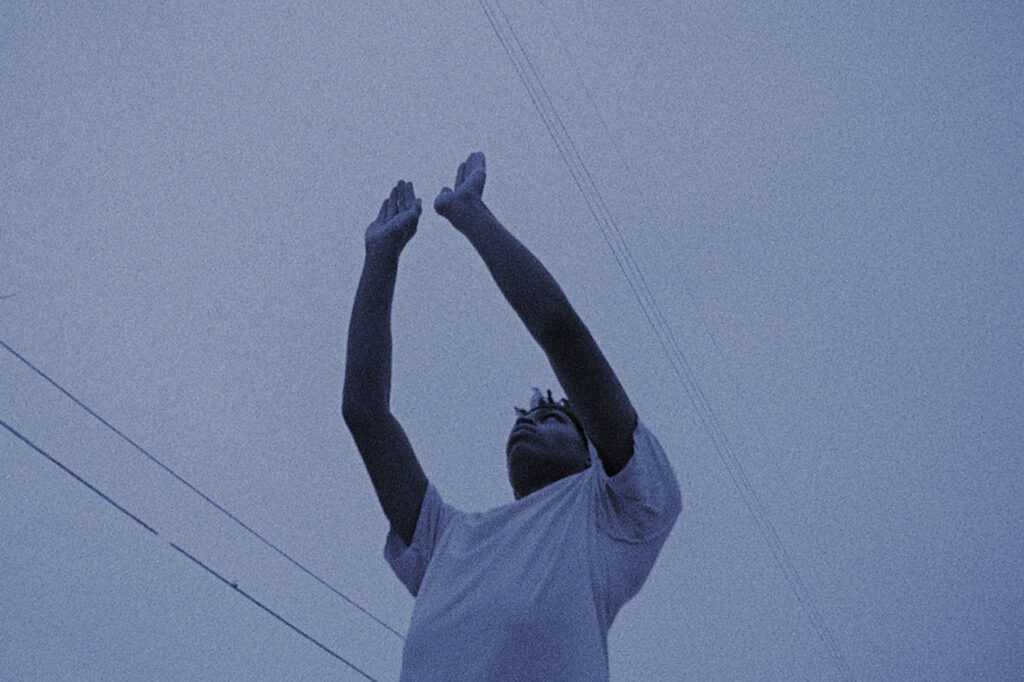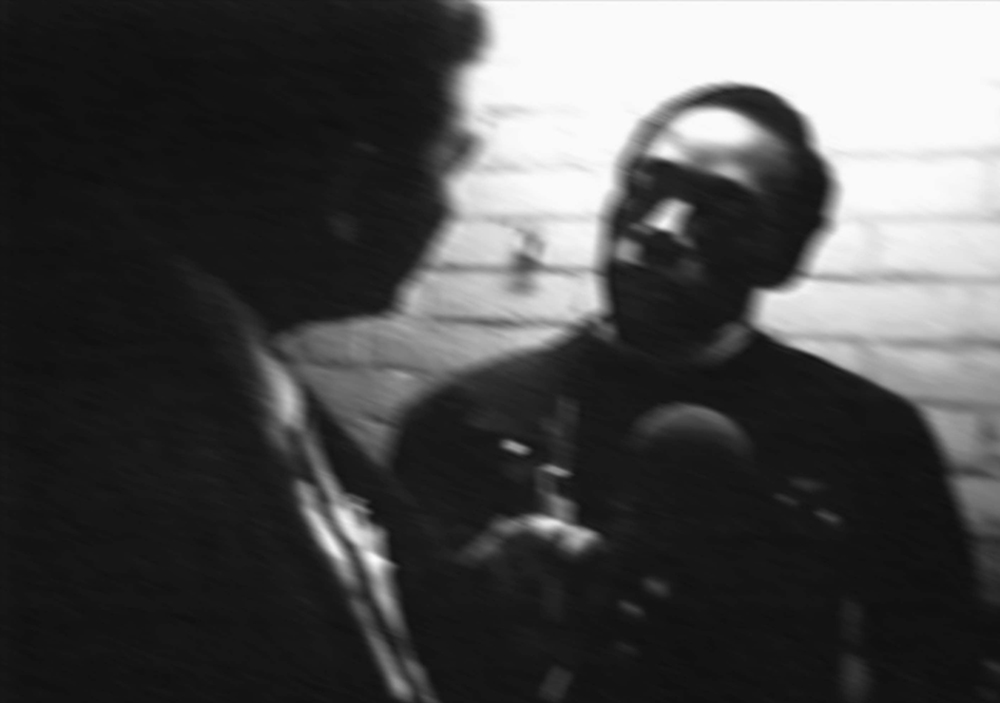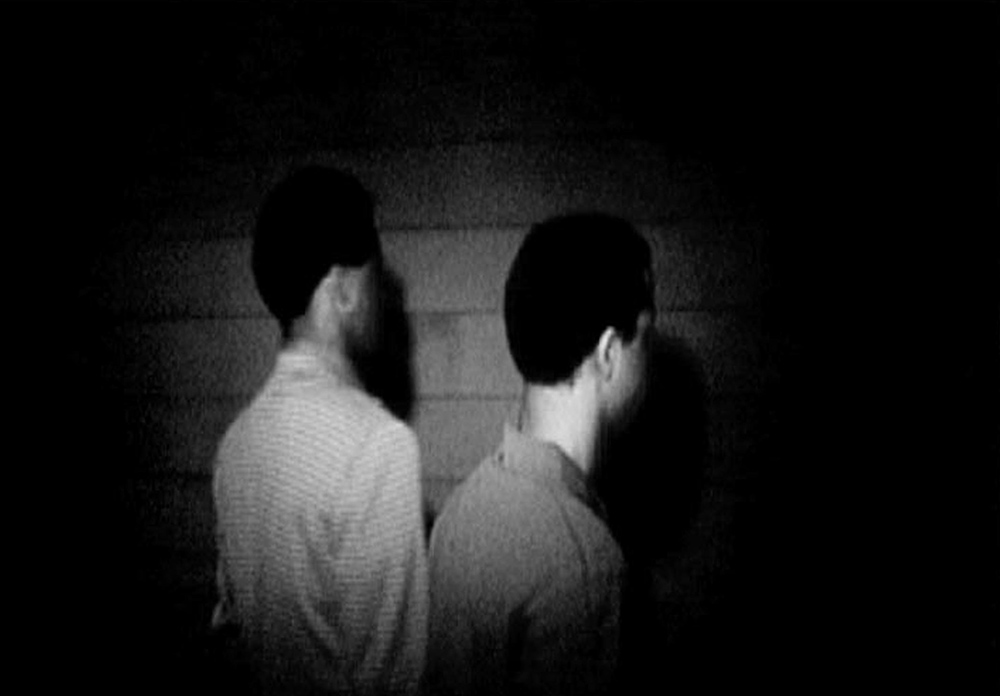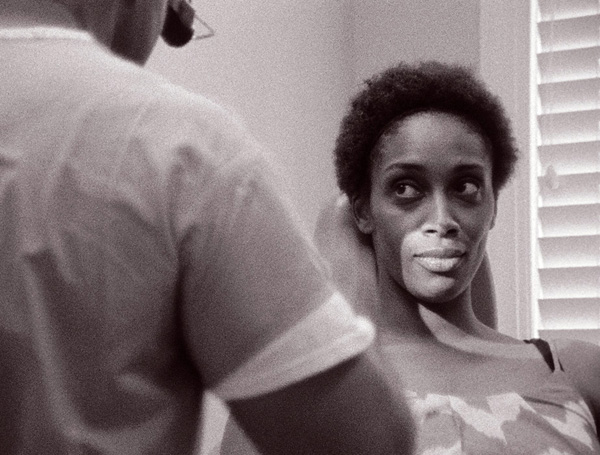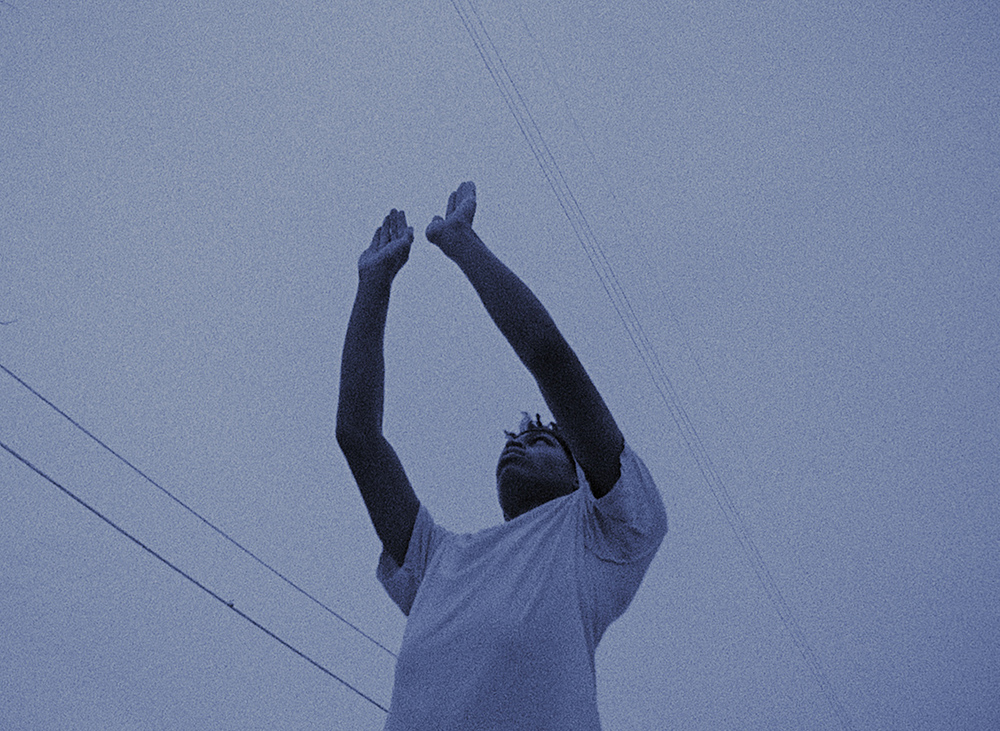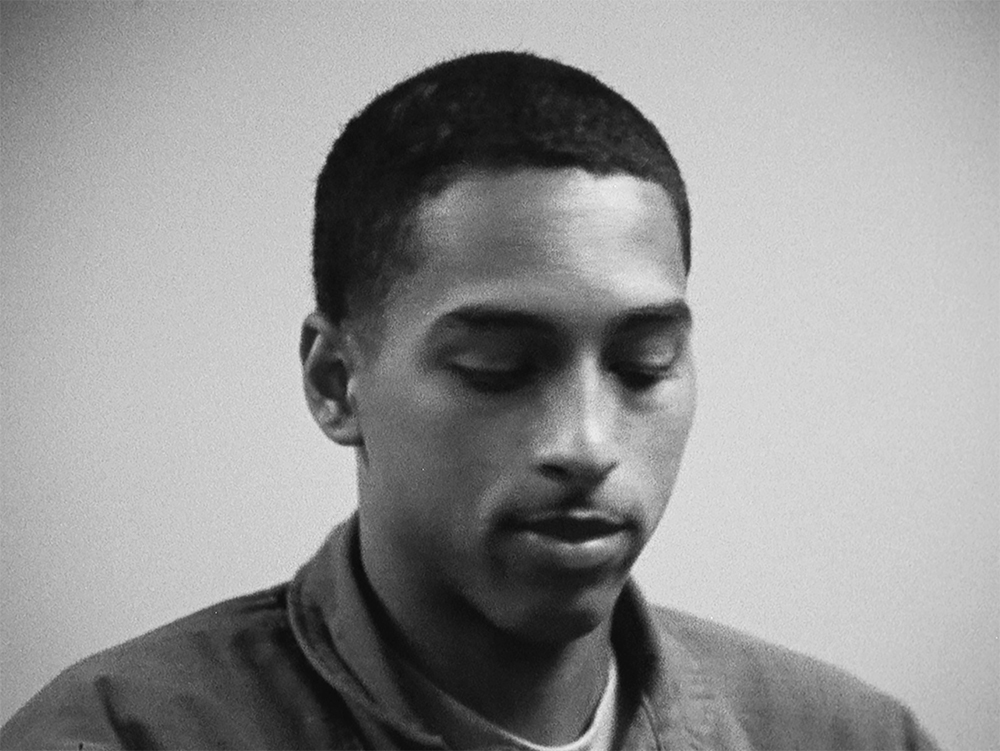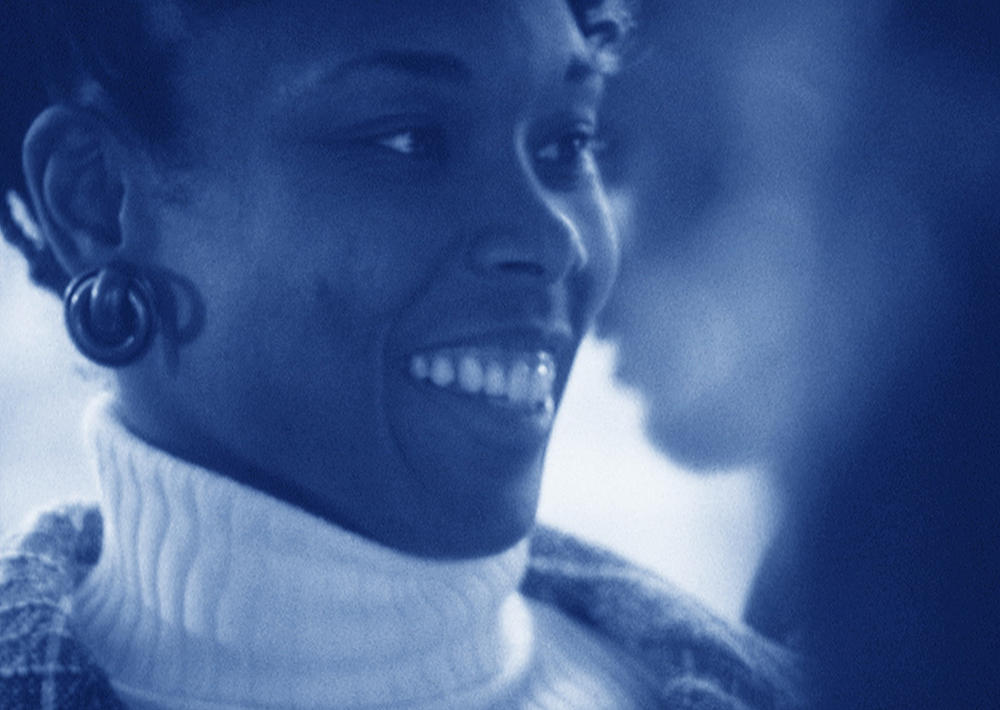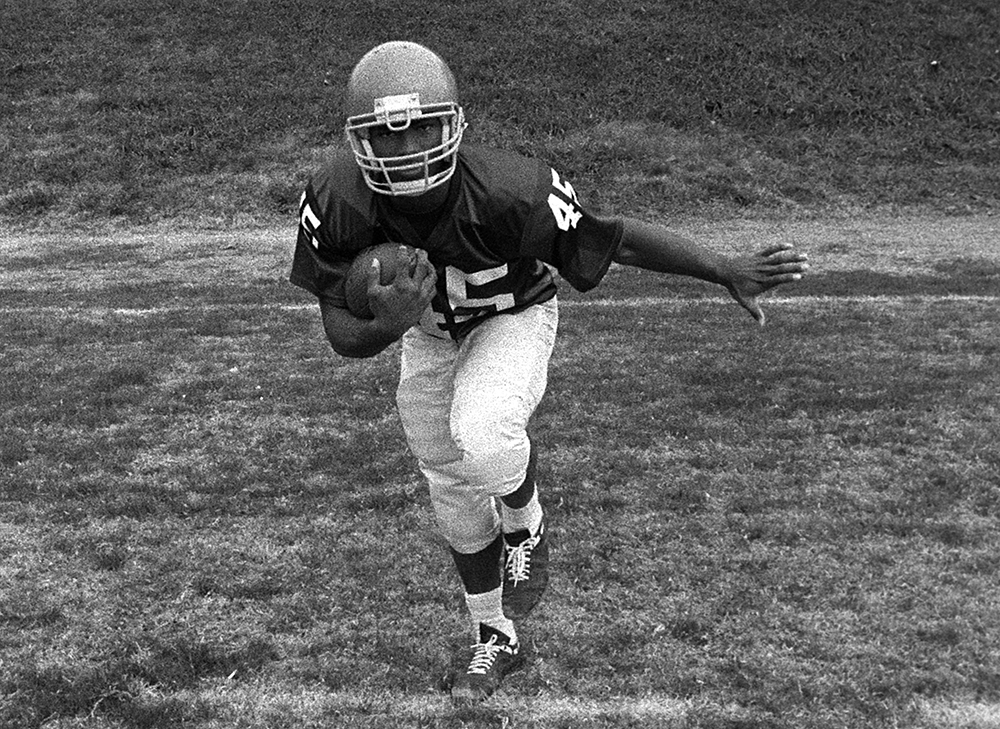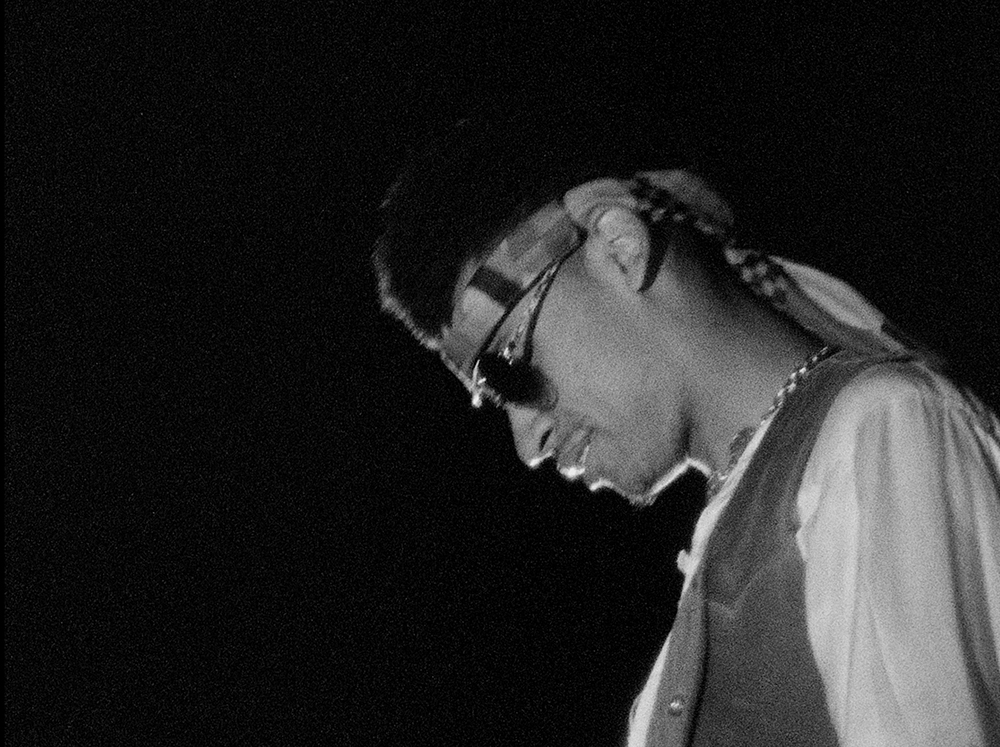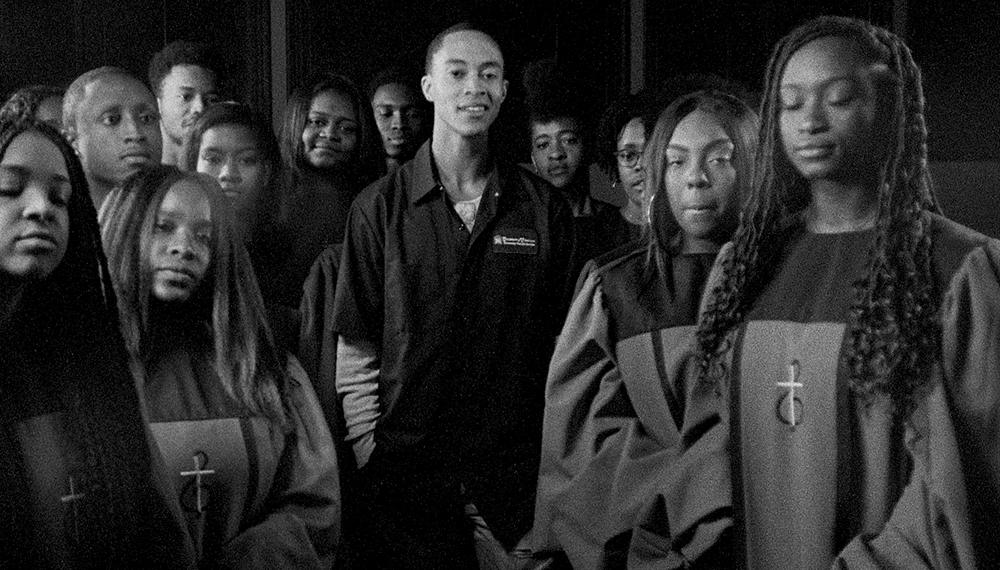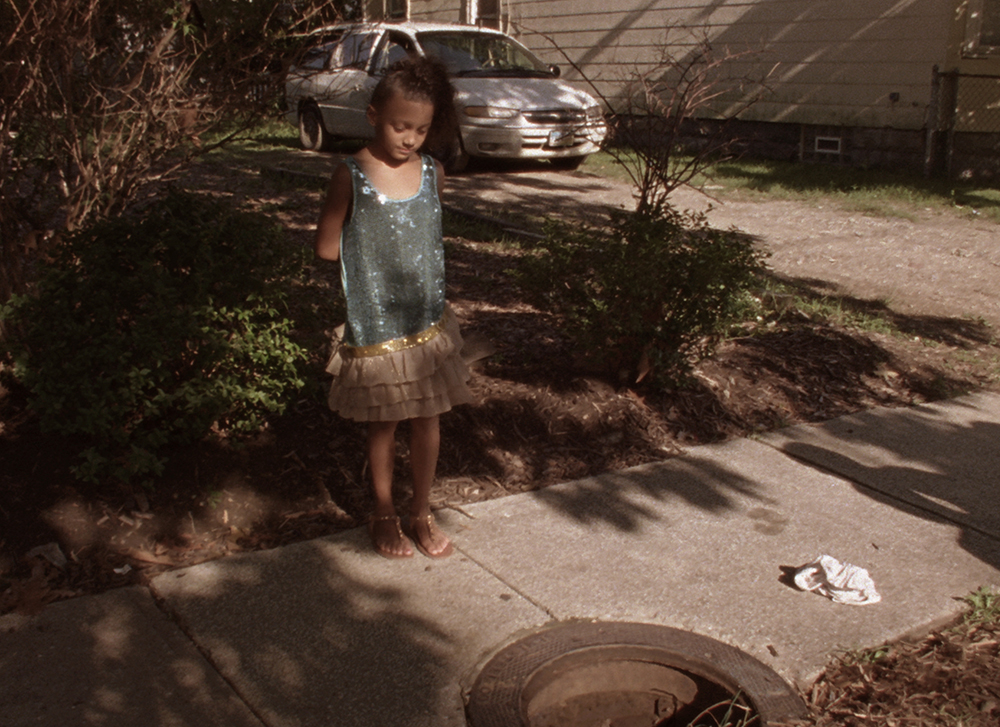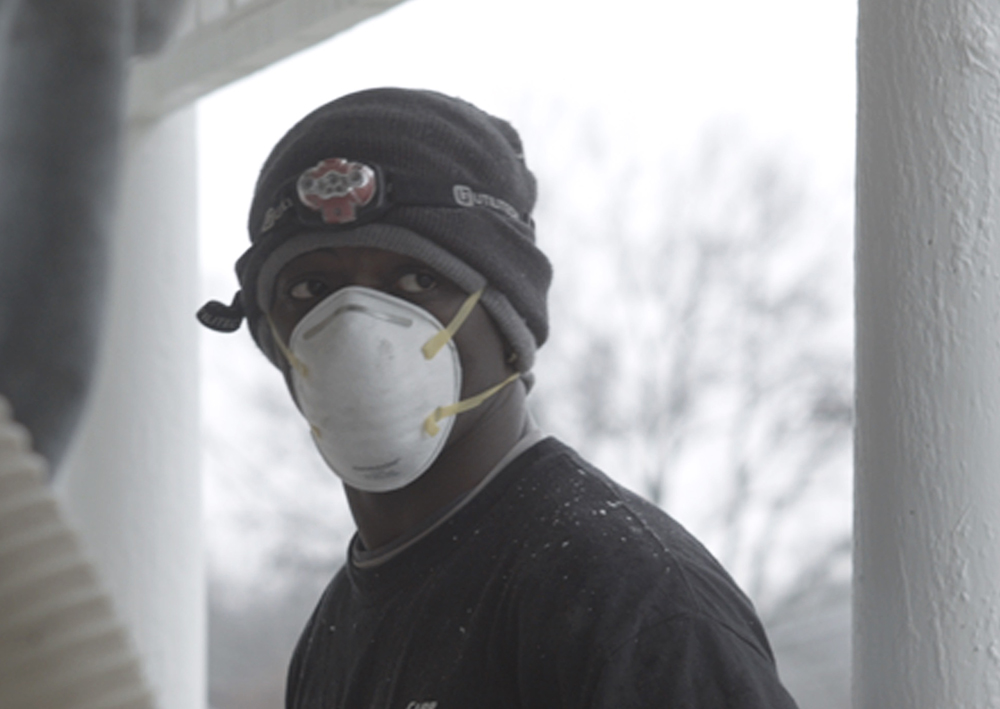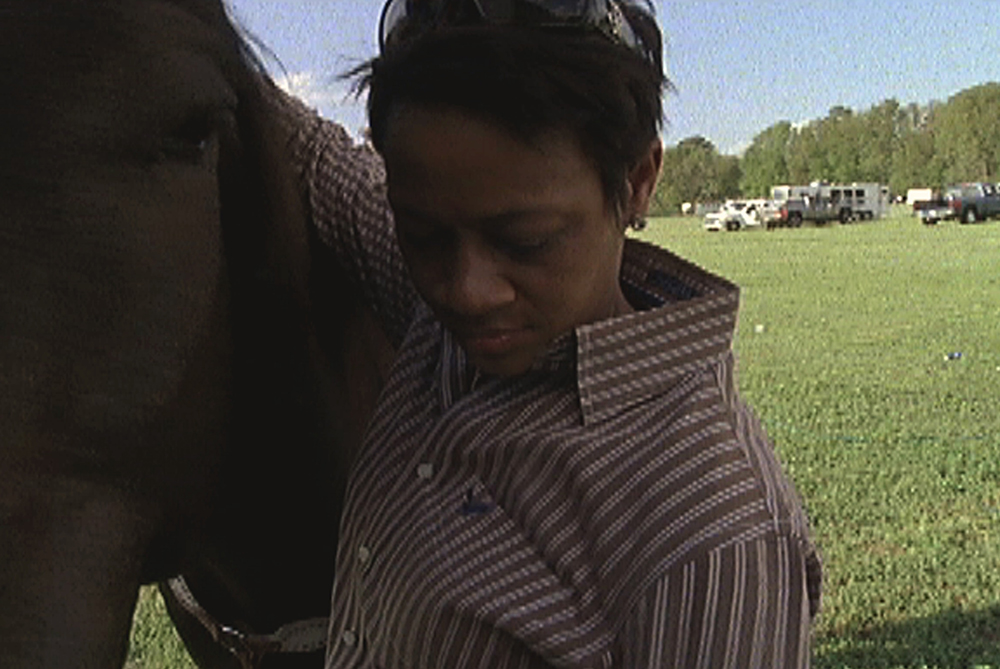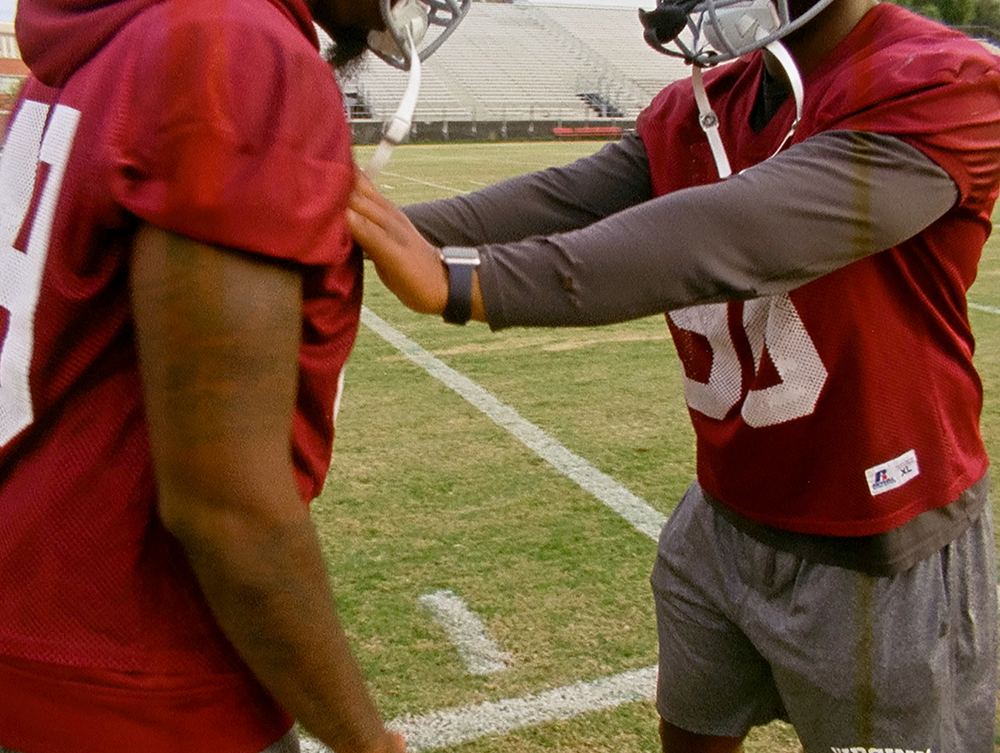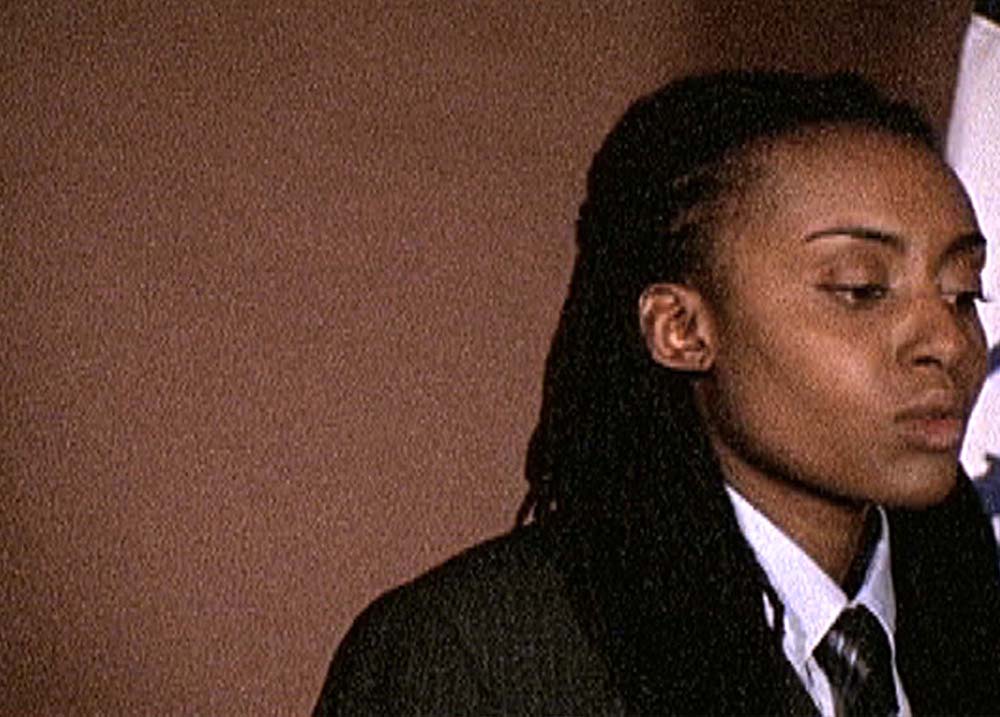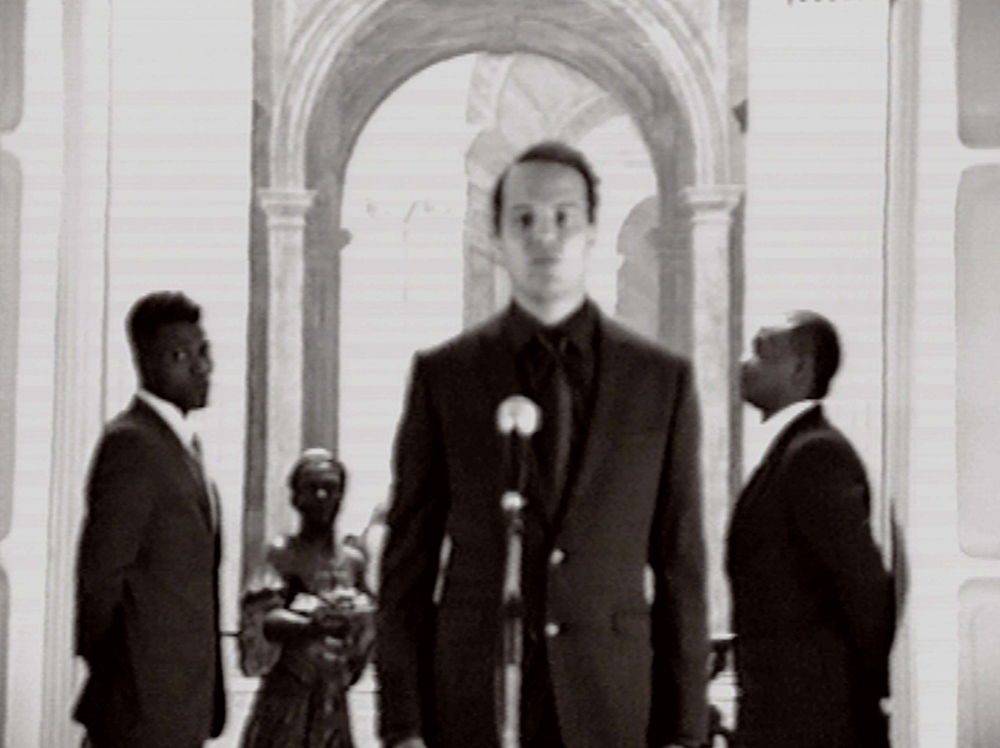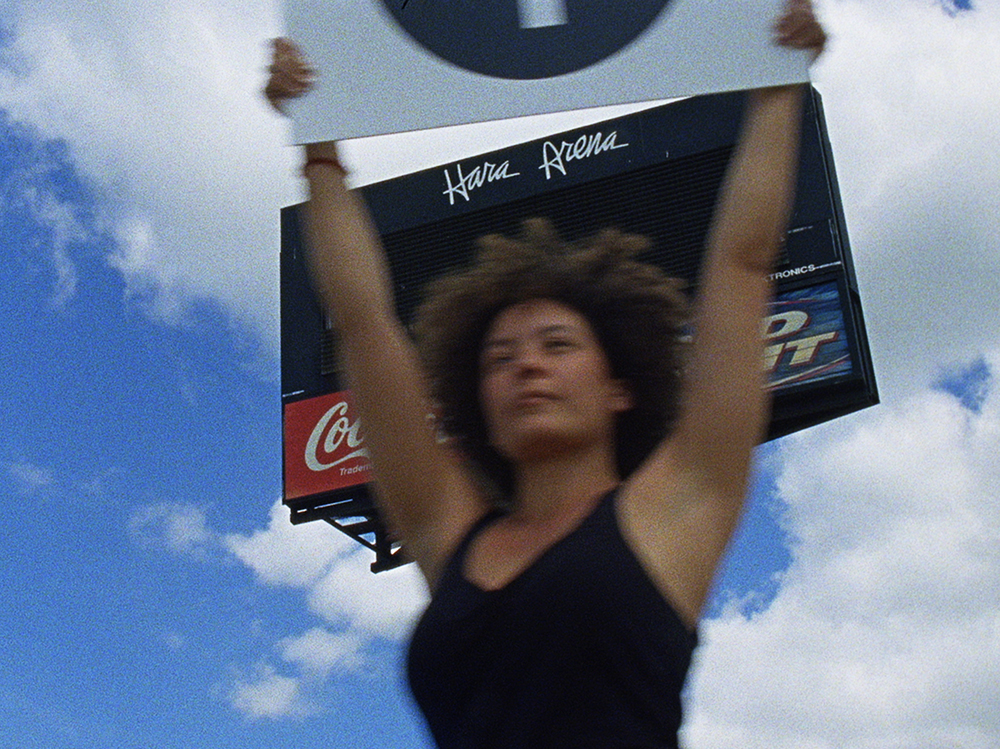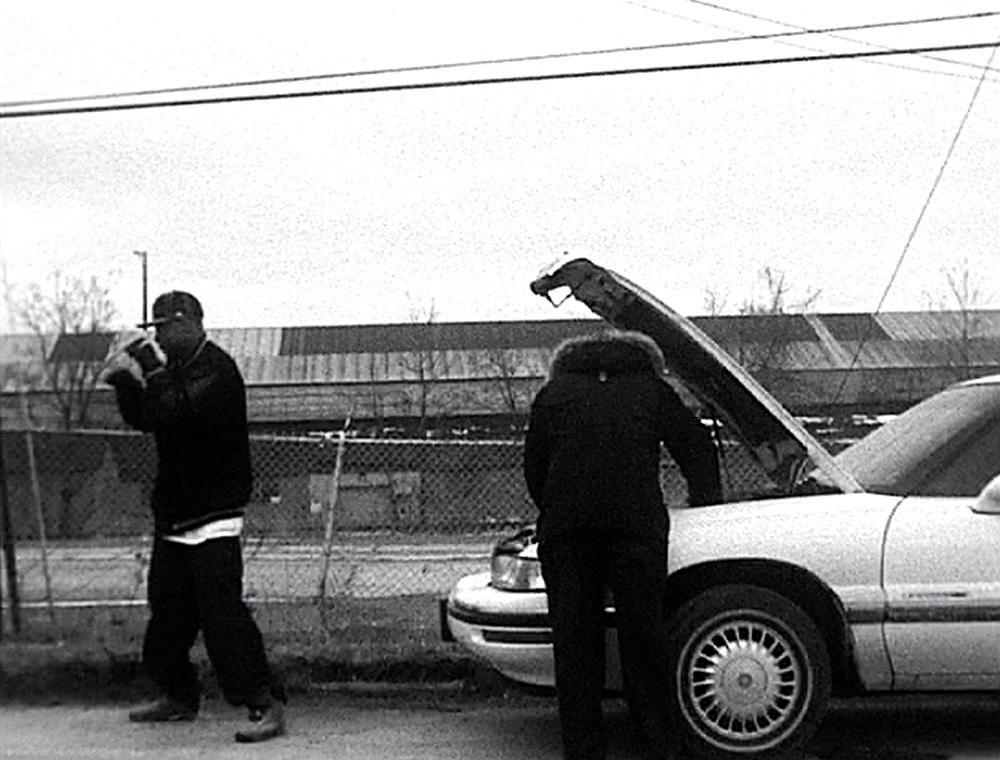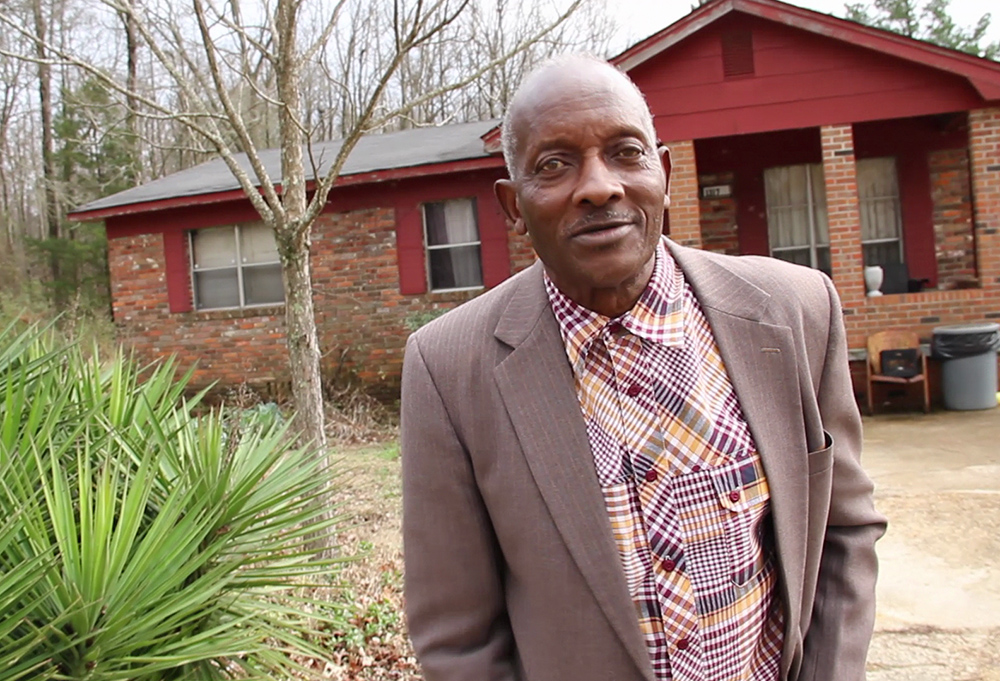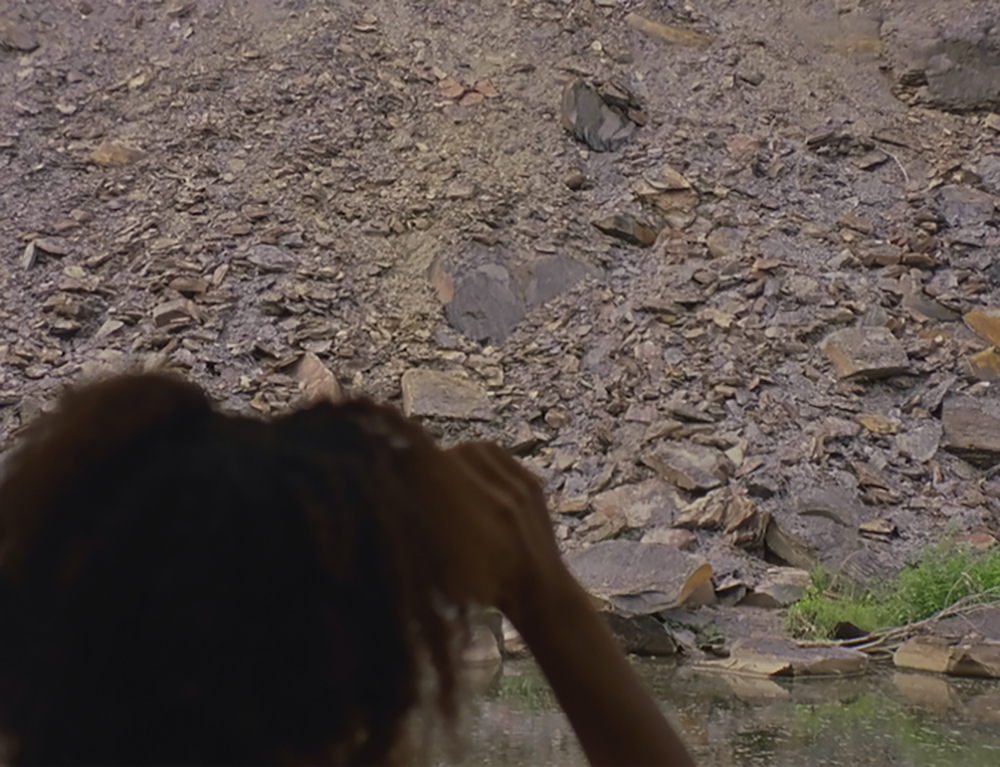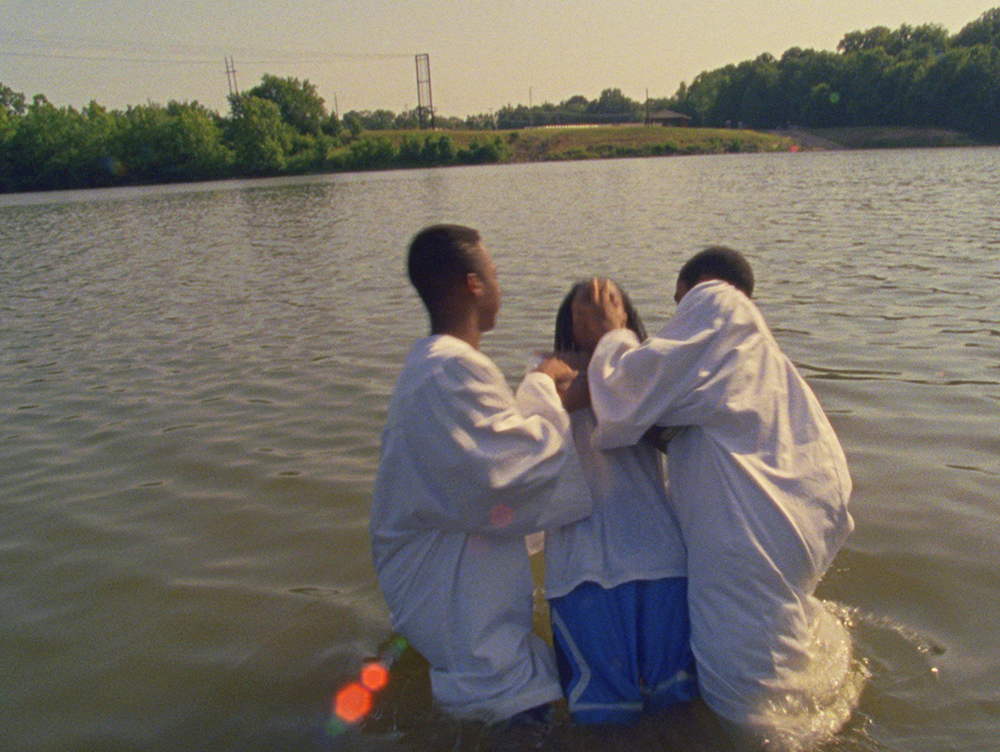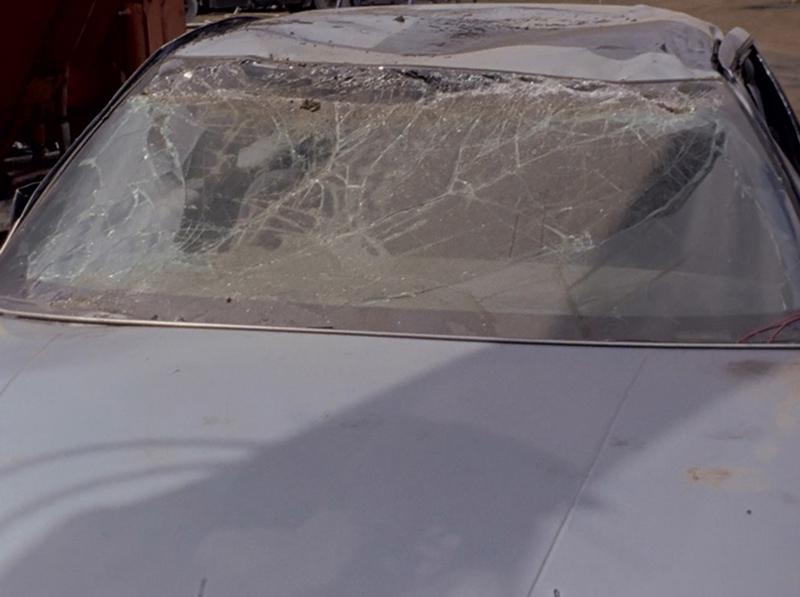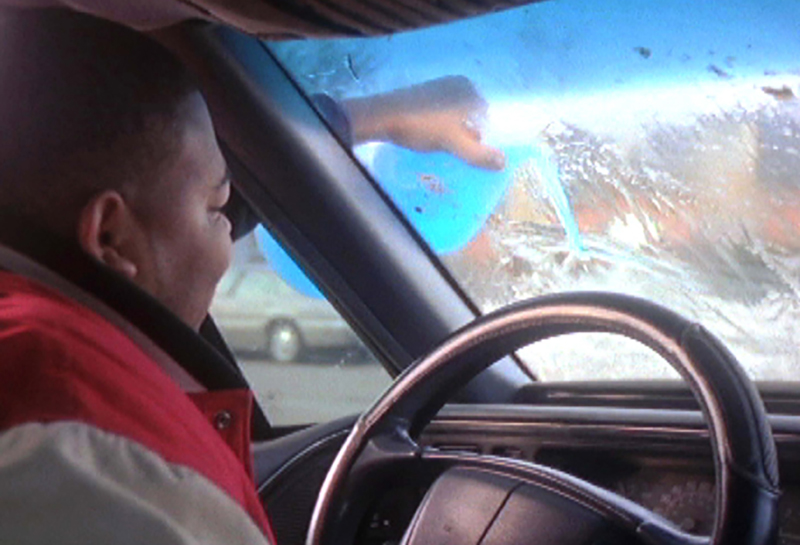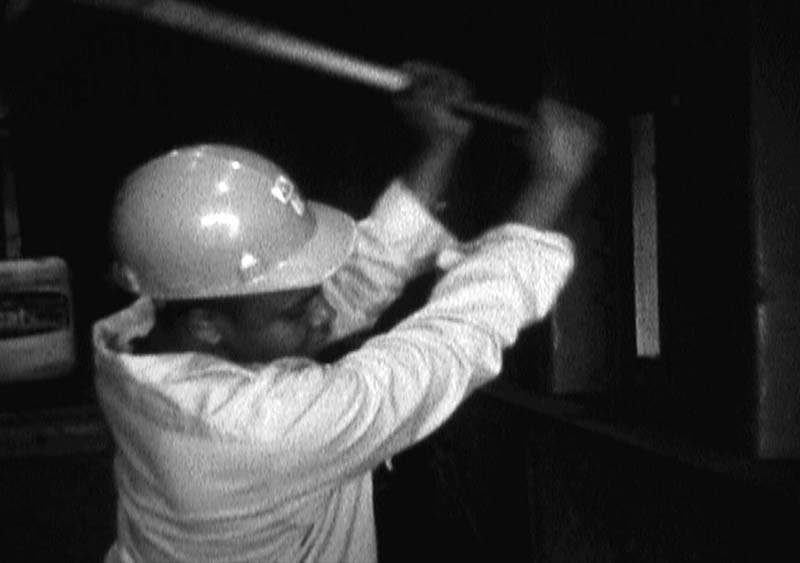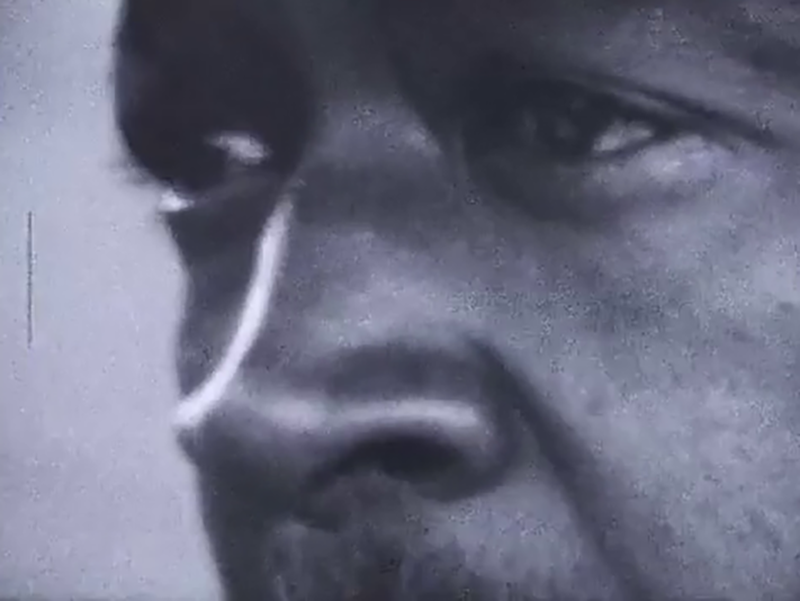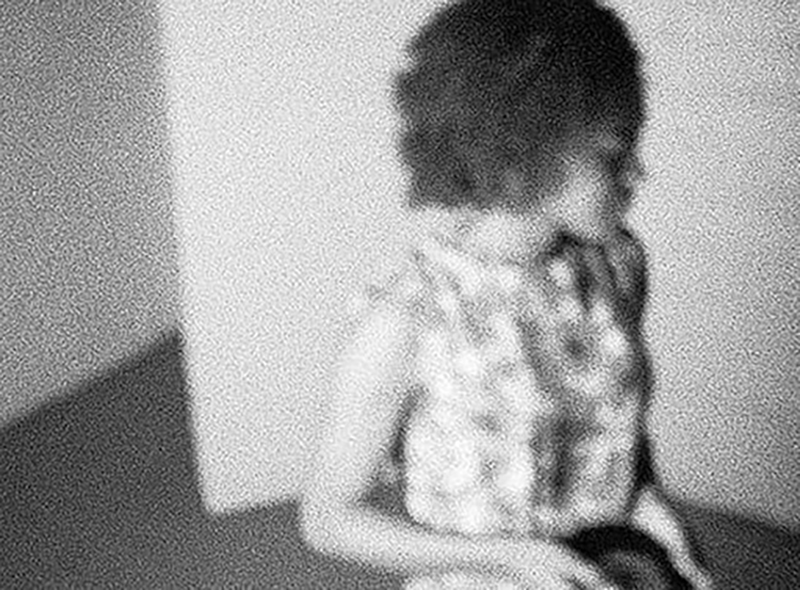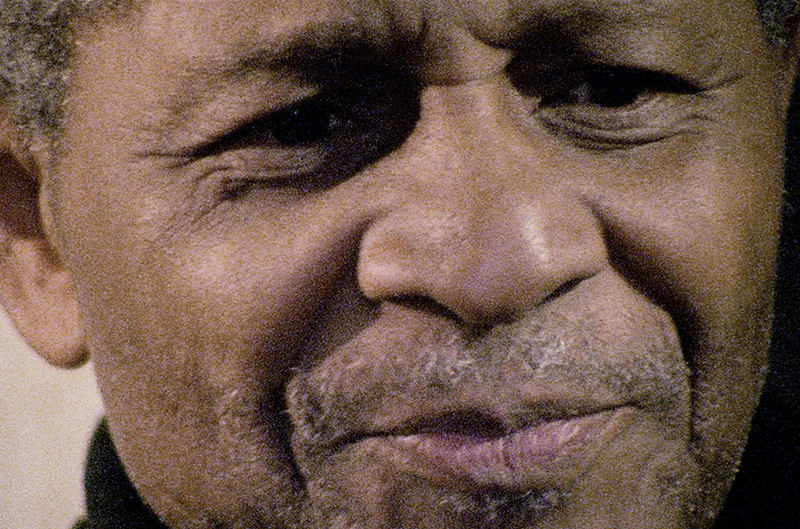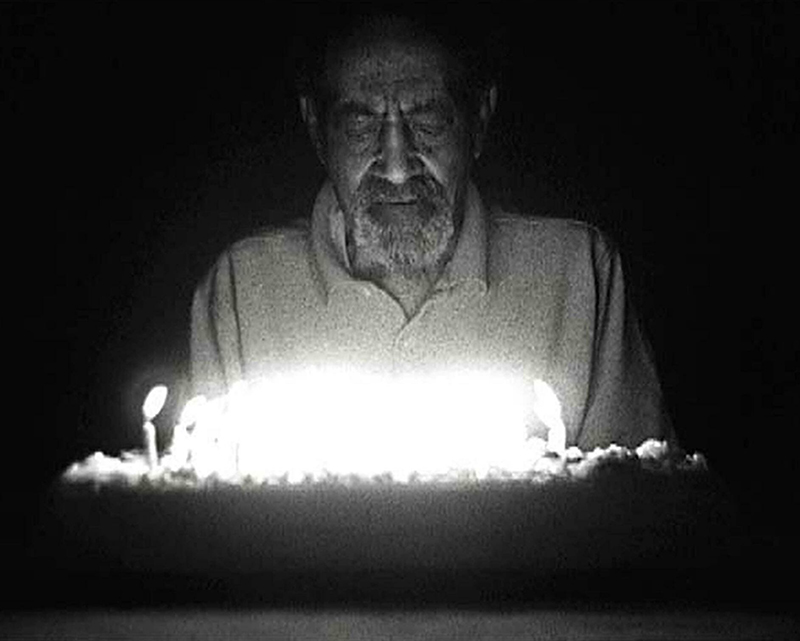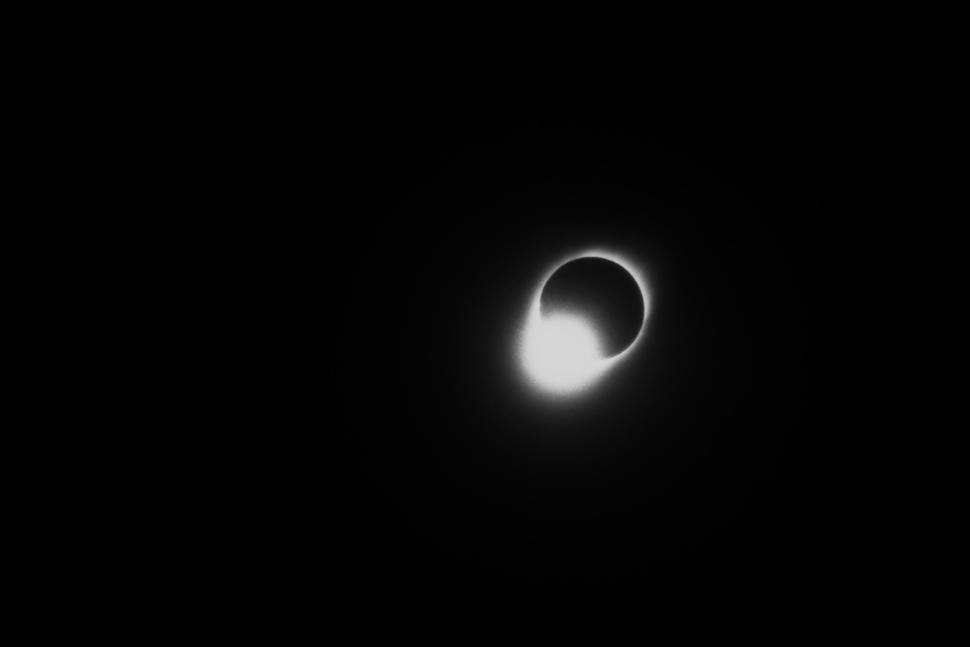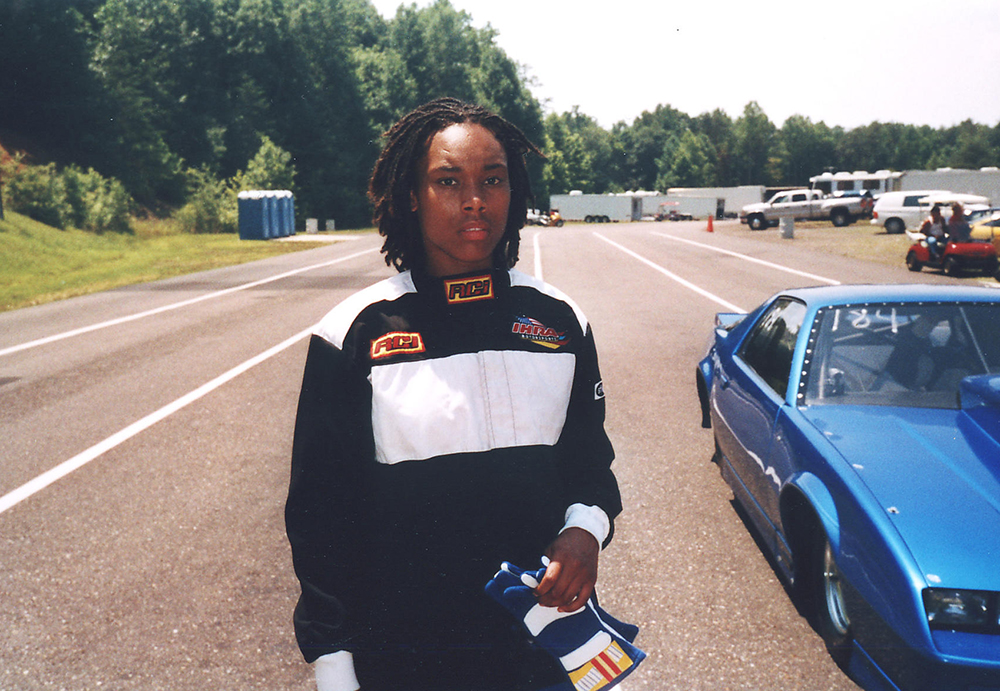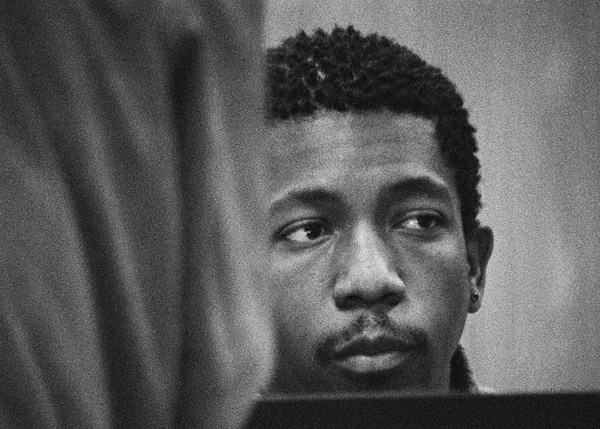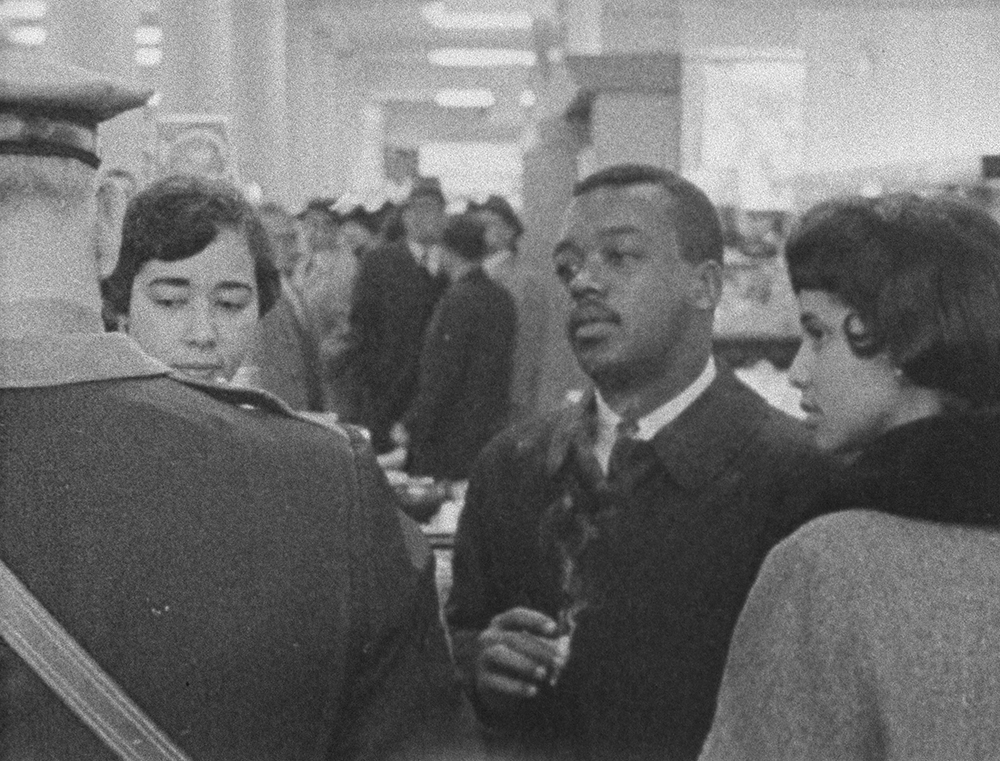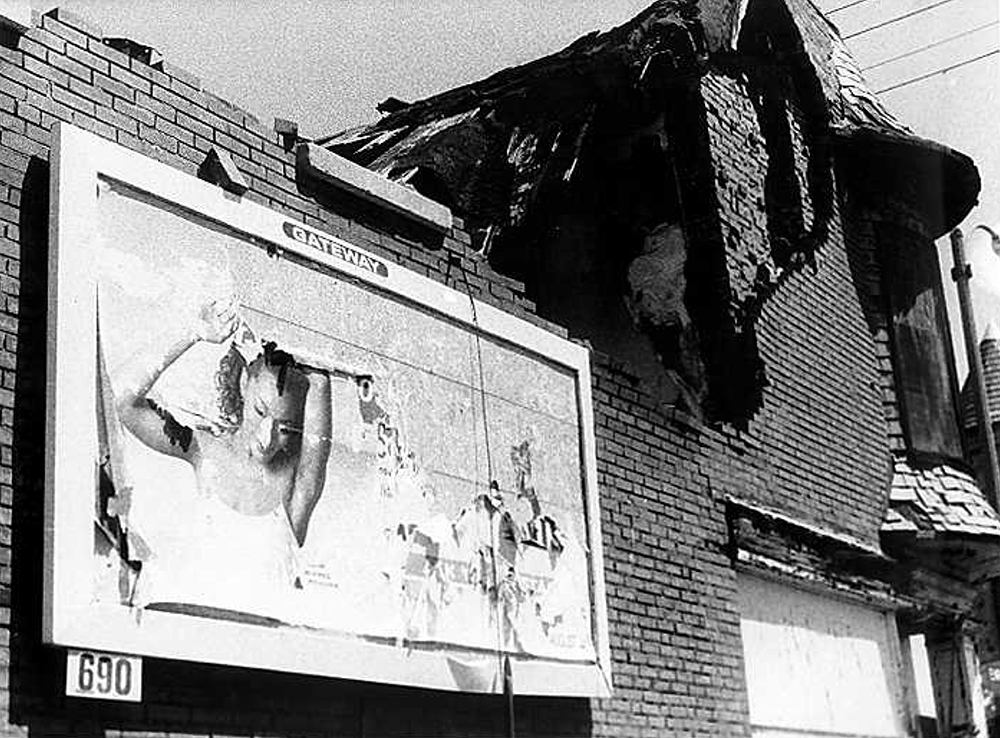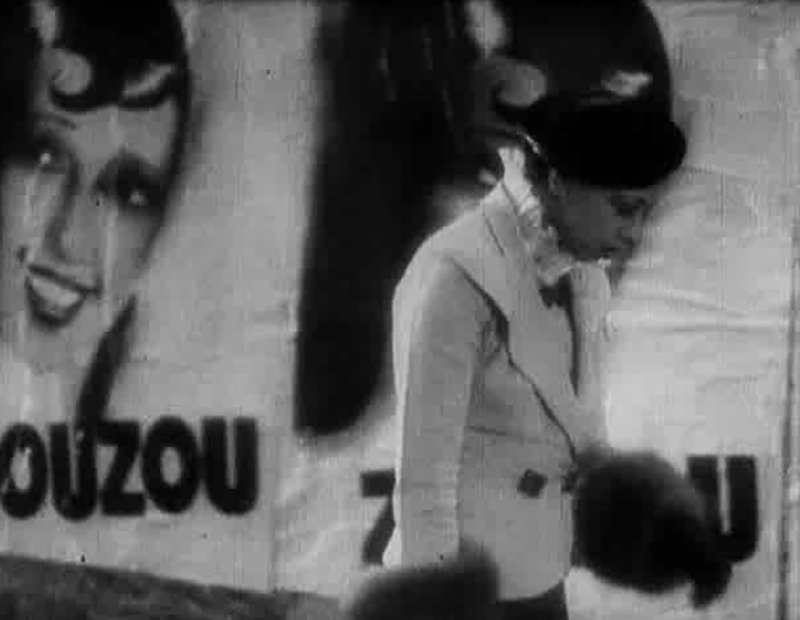Curated by Stoffel Debuysere for the Courtisane Festival 2020 and CINEMATEK, but cancelled due to COVID.
“My work must project and reveal the materials, procedure and process. I believe that this approach is not necessarily important to be noticeable to the viewer; it merely explains how I continue to approach the craft of art making. I firmly believe that the materials of the work must be noticeable. Procedure is the formal quality I am exploring with the work. The process is the execution of the formal quality. Once I have a grasp of procedure, the process becomes a discipline.”
Material, procedure and process: for the artist-filmmaker Kevin Jerome Everson, these three words define the core of his artistic approach. It is with this approach, grounded in an early preference for minimalism and a background in sculpture and street photography, that he knows like no other how to evoke the poetics of the lives and experiences of working-class African-American communities. Rather than pursuing conventional realism, he elects to abstract everyday expressions into theatrical gestures and to choreograph prosaic situations as artificial compositions. Rather than seeking a classical narrative form, he tends, more and more, towards pure abstraction.
Living and teaching in Virginia but born and raised in Mansfield, Ohio, as the child of parents who came from Mississippi during the Great Migration, Everson makes films that are inextricably linked to the socio-economic conditions and histories of the Midwest and South of the United States. The place-specific conditions of work, migration, language and culture form the primary material from which he derives his subjects, whereby he pays a great deal of attention to the concrete gestures and customs that are brought about by those conditions. From Taylorian labour rituals to Spartan sports exercises, from the agility of rodeo riders to the dexterity of street magicians, Everson focuses pre-eminently on the performative qualities expressed by gestures, expressions and interactions that all too often go unnoticed and undervalued. The films not only suggest the unrelenting cycle of everyday life but also the beauty, dignity and skill that lie within it. “The people on screen are always smarter than the viewer,” he notes, “so the viewer has to catch up.”
Everson’s esteem for work and craftsmanship can also be seen in his own artistic practice and work ethic. In over twenty years, he has produced a continuously growing body of work of more than 170 short films and a dozen full-length films, which time and again stand out for their exceptional care for the specificities of place, movement, speech and form. A look at the life of black communities near Lake Erie is organized as a structural composition (Erie), a portrait of polling stations in Charlottesville, Virginia, can be experienced as a “flicker film” (Tonsler Park), a demonstration of consumer products manufactured in Mansfield, Ohio, takes on the allure of a Kerry James Marshall painting (Westinghouse). Constantly juggling between reality and artificiality, materiality and narrativity, Everson displays an ever-increasing skill in the art that was once aptly described by another craftsman as “sculpting in time”.
——
PROGRAM 1
Eason
Kevin Jerome Everson, US, 2016, HD, 15′
Part of the one-hundred anniversary of the great Black migration in Philadelphia, Pennsylvania, Eason is loosely based on the life of James Walker Hood Eason (1886-1923) a long time member of the UNIA of Philadelphia.
The Reverend E. Randall T. Osborn, First Cousin
Kevin Jerome Everson, US, 2007, HD, 4′
One of Everson’s signature archival films that reveal the construction of performance and portrayal in a minimally edited interview with Martin Luther King’s first cousin about police brutality during race riots in Cleveland Ohio.
According to …
Kevin Jerome Everson, US, 2007, HD, 9′
With a rich source of found and original footage, this short film presents several versions of tragic events in the rural South.
Second and Lee
Kevin Jerome Everson, US, 2008, HD, 3′
A cautionary tale about when not to run. It uses archival reportage and voiceover recollection to trace through repetitive corridors of presumption, justice and judgment.
Ears, Nose & Throat
Kevin Jerome Everson, US, 2016, HD, 10′
In Kevin Jerome Everson’s deeply affecting Ears, Nose and Throat, a woman’s testimonial faculties are confirmed through medical examinations before she recites a tragic story, whose horrors we don’t see, hear, or smell, but can imagine far too easily.
IFO
Kevin Jerome Everson, US, 2017, HD, 10′
In Mansfield, Ohio, multiple UFO sightings yield both passionate firsthand accounts and detailed reflections; meanwhile, suburban youths raise their arms toward the heavens in becalmed surrender.
Recovery
Kevin Jerome Everson, US, 2020, HD, 10′
About an Airman training to be a pilot at Columbus Air Force Base 14th Flying Training Wing in Columbus, Mississippi.
——
PROGRAM 2 – Black Fire UVA
Over the last half-dozen years, Kevin Jerome Everson and Claudrena N. Harold have collaborated with their students on a series of films that examine the history of African American students and faculty at Charlottesville’s University of Virginia (UVA).
Sugarcoated Arsenic
Kevin Jerome Everson, Claudrena N. Harold, US, 2013, HD, 20′
A cinematic exploration of African American intellectual, social, and political life at the University of Virginia during the 1970s. The film tells the story of African American women and men who through their public and private gestures sought to create a beloved community that thrived on intellectual exchange, self-critique, and human warmth.
We Demand
Kevin Jerome Everson, Claudrena N. Harold, US, 2016, HD, 10′
The story of the anti-Vietnam War Movement from the perspective of James R. Roebuck, a northern- born African American who studied at the University of Virginia dur- ing the late 1960s and early 1970s. Over a ten-day period of unprecedented student upheaval at the University, Roebuck, the first African American president of UVA’s Student Council, confronted a series of political challenges and existential dilemmas.
Fastest Man in the State
Kevin Jerome Everson, Claudrena N. Harold, US, 2017, HD, 10′
Kent Merritt waxing poetically about being one of the first four Black scholarship athletes at the University of Virginia.
How Can I Ever Be Late
Kevin Jerome Everson, Claudrena N. Harold, US, 2017, HD, 10′
African American students at the University of Virginia greet the band Sly and the Family Stone at the Charlottesville airport in 1973.
Black Bus Stop
Kevin Jerome Everson, Claudrena N. Harold, US, 2019, HD, 9′
Students reclaim a popular gathering spot on the campus of the University of Virginia.
Hampton
Kevin Jerome Everson, Claudrena N. Harold, US, 2019, HD, 7′
Finds the University of Virginia gospel choir, Black Voices, returning from a triumphant concert in Hampton Roads.
——
PROGRAM 3
Workers Leaving the Job-Site
Kevin Jerome Everson, US, 2013, HD, 7′
Another take, another era, another factory, shot in Mississippi in summer 2012, this is a riff on the Lumière Brothers classic 1895 film.
Fe26
Kevin Jerome Everson, US, 2014, HD, 7′
Shot on 16mm in the summer of 2013, Fe26 follows two gentlemen around the East Side of Cleveland, Ohio, and examines the tensions between illegal work — in this case, the stealing of manhole covers and copper piping — and the basic survival tactics that exist in areas of high unemployment. The film features two local residents, Issac “I-Pleeza” Chester and Jonathan “Streets” Lee, previously seen in Rita Larson’s Boy/The Tombigbee Chronicles No. 2. As in Sound That, the buried suggests the relationship between what’s seen above ground and the elements taken for granted beneath the surface, in this instance, criminal deeds and activities. (KJE)
Sound That
Kevin Jerome Everson, US, 2014, HD, 12′
Sound That follows employees of the Cleveland Water Department on the hunt for what lies beneath, as they investigate for leaks in the infrastructure in Cuyahoga County, Ohio. As in Fe26, the buried suggests the relationship between what’s seen above ground and the elements taken for granted beneath the surface, in this instance, basic city services. The sound invites the viewer/listener into the hollow sounds lurking under Cleveland’s surfaces. (KJE)
R-15
Kevin Jerome Everson, US, 2017, HD, 5′
An insulator doles out R-15, a material that keeps homes warm in the winter months and cool in the summer.
Westinghouse Four
Kevin Jerome Everson, US, 2020, HD, 3′
About an old consumer product produced at the Westinghouse factory in Mansfield, Ohio in the 1960s.
Ten Five in the Grass
Kevin Jerome Everson, US, 2012, HD, 32′
A film about Black cowgirls and cowboys in preparation for the specific rodeo event of calf roping. Filmed in Lafayette, Louisiana and Natchez, Mississippi in late spring/summer 2011, the title Ten Five in the Grass refers to the type of rope used to capture fast calves.
Union
Kevin Jerome Everson, US, 2019, HD, 3′
Illustrates the Virginia Union University football team working together.
——
PROGRAM 4
Emergency Needs
Kevin Jerome Everson, US, 2007, HD, 7′
Emergency Needs is a 16mm film about the mayor of Cleveland, Ohio Carl Stokes, dealing with the July 1968 uprising.
Rhinoceros
Kevin Jerome Everson, US, 2013, HD, 6′
A staging of the last speech of Alessandro de’ Medici (1510- 1537), the first Duke of Florence. Because of his mixed African Italian heritage, Alessandro, sometimes referred to as Il Moro (the Moor), has been called the first black European head of state. Rhinoceros suggests that Alessandro de’ Medici’s final political performance was captured on tape for television broadcast and now exists as found object and historical document.
Rita Larson’s Boy
Kevin Jerome Everson, US, 2012, HD, 11′
Everson hoped to find a lost audition tape of the actor Nathaniel Taylor, raised in Columbus, MS, who portrayed the character ‘Rollo Larson’ — Rita Larson’s Boy — in the 70s sitcom Sanford and Son. With no luck, he set out to make his own version of the tape. Ten young actors, in Cleveland Ohio, portray ten actors auditioning for the role of Rollo Larson.
Round Seven
Kevin Jerome Everson, US, 2018, HD, 19′
Centers on the famous 1978 boxing match in Dayton, Ohio between Sugar Ray Leonard and prizefighter Art McKnight of Mansfield, Ohio. One of a series of films focusing on people and phenomenon related to the filmmaker’s hometown.
Undefeated
Kevin Jerome Everson, US, 2008, HD, 2′
About mobility and immobility, or just trying to stay warm. Featuring DeCarrio Couley shadowboxing to the rhythm of a hand-cranked Bolex.
Charlie’s Proof
Kevin Jerome Everson, US, 2013, HD, 13′
Charlie’s Proof is about legendary Charlie Smith of Columbus, Mississippi disagreeing with the filmmaker.
Music from the Edge of the Allegheny Plateau
Kevin Jerome Everson, US, 2019, HD, 7′
Rappers and gospel singers, on the streets and in their homes. Everson was inspired by William Klein’s The Little Richard Story (1980), a film that tells the story of the rock- and-roll icon’s life through the eyes and experiences of friends, family, and impersonators.
——
PROGRAM 5
BZV
Kevin Jerome Everson, US, 2010, HD, 28′
A film about the result of labor. It has a couple using their hard earned wages in search of furniture, citizens’ leisurely water skiing and fishing. BZV was shot in and around Brazzaville, The Republic of Congo. With a naturalistic approach, the film also interweaves various elements concerning the social and physical landscape. The title is the three-letter airport code for Brazzaville.
The Island of St.Matthews
Kevin Jerome Everson, US, 2013, HD, 70′
The Island of St. Matthews happened because I was looking for a lot of old photographs for artist’s books years ago. When I was down in Mississippi, I was asking my aunt on my mom’s side, “Where are the old pictures and stuff like that?” And she kept saying, “We lost them in the flood.” So I always wanted to make a film about the 1973 flood of the Tombigbee River back home. (KJE)
——
PROGRAM 6
Regal
Kevin Jerome Everson, US, 2015, HD, colour, 3′
Regal is three Pontiacs and a Buick Regal becoming something entirely different.
Company Line
Kevin Jerome Everson, US, 2009, 30′
Company Line is a film about one of the first predominately Black neighborhoods in Mansfield Ohio. The title refers to the name historically used by residents to describe their neighborhood, located on the north side of town close to the old steel mill. The Company Line began during the post-war migration of Blacks from the south to the north in the late forties. The neighborhood was purchased in the early seventies and its residents were scattered throughout Mansfield. City employees and former residents of the Company Line narrate the film.
Lead
Kevin Jerome Everson, US, 2009, b&w, 3′
Lead is a story of an early 20th Century Robin Hood.
Lost Nothing
Kevin Jerome Everson, US, 2016, colour, 3′
Lost Nothing is the subject Willie James Crittenden waxes poetically about.
Traveling Shoes
Kevin Jerome Everson, US, 2019, colour, 7′
Traveling Shoes is based on the hit record by the Ohio based gospel group, The Brown Singers.
Improvement Association
Kevin Jerome Everson, US, 2016, colour, 11′
Improvement Association has Malik Hudgins, an UNIA life-long member of Philadelphia Pennsylvania, waxing poetically about life.
Oscar at 8903 Empire
Kevin Jerome Everson, 2016, colour, 2′
Oscar at 8903 Empire is the address of proud home owner Oscar Dickerson.
Ninety-Three
Kevin Jerome Everson, US, 2008, b&w, 3′
Ninety-Three is a wonderful age to celebrate.
——
PROGRAM 7
Condor
Kevin Jerome Everson, US, 2019, HD, b&w, 7′
The July 2, 2019 solar eclipse, filmed in 100% totality, over the Chilean coast, in 16mm black and white. Condor is the national bird of Chile.
Erie
Kevin Jerome Everson, US, 2010, HD, b&w, 81′
Erie consist of a series of single take shots in and around communities near Lake Erie. The scenes relate to a Black migration in the USA, contemporary conditions, folks concentrating on the task at hand, theater and famous art objects.
——
PROGRAM 8
The Mayberry Practice Calf
Kevin Jerome Everson, US, 2012, 4′
The Mayberry Practice Calf is about Natchez, Mississippi’s Fred Mayberry’s wonderful design.
Second Place
Kevin Jerome Everson, US, 2012, colour, 3′
Second Place is about the skillful effort that goes into a rodeo’s finest events.
The Wooden Calf
Kevin Jerome Everson, US, 2012, colour, 2′
The Wooden Calf is about keeping sharp before the rodeo.
Cinnamon
Kevin Jerome Everson, US, 2006, colour, 70′
Cinnamon presents a glimpse into the world of African American drag racing. It is an experimental feature film about the consistent routine of a bank teller and a mechanic as they prepare for the sport of drag racing. Once the routine is disrupted, the result of the race comes into doubt. The bank teller is a driver who tries to stay focused before races. The mechanic’s routine is to constantly examine the driver’s behavior. He has to adjust the racecar to the driver’s skill and ability. Also the mechanic adjusts the racecar for the weather conditions. The film portrays their relationship as similar to that of a composer and a musician, in which the mechanic is the composer and the driver interprets the music. Cinnamon hosts several different formal styles as well as different materials. The techniques and styles employed will alternate between the conventionally scripted scenes and documentary footage. The scripted scenes have a naturalistic feel.
——
PROGRAM 9
Tonsler Park
Kevin Jerome Everson, US, 2017, 16mm, 80′
This portrait of Afro-American staff members of the polling station at Tonsler Park in Charlottesville, Virginia, was filmed during the US Presidential Election Day on 8 November 2016, the day when the battle between Donald Trump and Hillary Clinton was decided. Kevin Jerome Everson records the staff taking oaths, rows of voters passing as they hand out voting slips, while no one seems aware of the camera that is standing there, motionless. Conversations change to hubbub, backs block the camera’s view. This is democracy in practice and every vote counts. The film slowly opens a space for those who so often remain invisible, and the location is itself not without significance: Tonsler Park is named after Benjamin Tonsler, a local Afro-American school director who defied the rules to continue to teach older Afro-Americans in the era of segregation. With a sense of place and historical research, Kevin Jerome Everson’s films combine scripted and documentary elements with rich elements of formalism. The subject matter is the gestures or tasks generated by certain conditions in the lives of working-class African Americans and others of African descent.
——
Oh, Weary Rivers
Curated by Terri Francis
Kevin Everson’s films echo the blues, as much a revolt within weariness as a catalog of creative resilience in the everyday.
As a secular musical expression, the blues have specific formal qualities and social contexts that speak to the dislocations, meteorological threats, economic precarity, inequity and overcoming in the epic story of Black lives in the United States.
Neither European nor African, the blues, say scholars like James Sellman are distinguished by the “blue note,” which is “sung or played slightly flat, or lower than their ‘correct’ scalor pitches.”[1] The blues means, as Langston Hughes put it, “the bellowing voice of Bessie Smith” and the “incongruous humor” of lamenting life’s disappointments and struggles, whether personal as in a lover gone away or political as in a collective sense of resilience and pride in the face of economic deprivation and voter disenfranchisement. The blues involves mythologies of deals with the devil and histories of Black Migration from Mississippi to points north such as Chicago and Detroit. The lyrics can be funny, even raunchy, as well as plaintive and poetic.[2]
The blues conjures that certain shift in the weather, felt in the bones, that portends a stranger’s arrival, a secret revealed — something calamitous — or else, the blues convey the relief in the air once the storm has passed; it’s an exhaling of grief, loss, longing. The blues always feels old, and somehow even older than nineteenth-century cinema, despite taking shape in the first decades of the twentieth century.
This program presents a chamber of resonances and dissonances with documentary tradition, labor movements, and collectivity. Madeleine Anderson’s coverage of civil rights demonstrations speak to the past with newsreel-like immediacy. Harris’s film is marked by the absence of visible people where almost any Everson film is defined by the presence of people, his neighbors, family members, students, and co-creators in Northern Ohio and Mississippi. Both Anderson and Harris’s films feature the human voice through essayistic montage and Black music traditions, still resonating with the formal rigor of Everson’s work. (Terri Francis)
[1] “The Negro Artist and the Racial Mountain (1926).” Oxford African American Studies Center. 31 May. 2010; Accessed 5 Feb. 2020. https://oxfordaasc-com. proxyiub.uits.iu.edu/view/10.1093/acref/9780195301731.001.0001/acref- 9780195301731-e-78675.
[2] “The Negro Artist and the Racial Mountain (1926).” Oxford African American Studies Center. 31 May. 2010; Accessed 5 Feb. 2020. https://oxfordaasc-com. proxyiub.uits.iu.edu/view/10.1093/acref/9780195301731.001.0001/acref- 9780195301731-e-78675.
Integration Report 1
Madeline Anderson, US, 1960, DCP, 20′
Preserved by the Smithsonian’s National Museum of African American History and Culture, Integration Report 1 examines the late 1950s struggle for Black equality in Alabama, Brooklyn and Washington, D.C., through speeches and the musical tradition of protest singing, here performed by Maya Angelou. Filmed in part by pioneering television producer and editor Madeleine Anderson, it speaks of both one person’s testimony and collective history.
still/here
Christopher Harris, US, 2000, 16mm, 60′
Harris’s dirge-like remembrance of a bygone neighborhood is too a direct critique of real estate and banking policies in the neighborhood. Its blues influences are heard in the melancholic score performed by Chicago bassist Tatu Aoki.
Mississippi Blues
Robert Parrish, Bertrand Tavernier, US, FR, 1984, colour, 96′
Described by New York Times film critic Janet Maslin as “both serious and quaint,” the documentary situates the blues within a quilt of humor, gospel, blues, Faulkner, and the African American church. Blue notes are heard in both storytelling, both spoken and sung. (Terri Francis)
The Southerner
Jean Renoir, US, 1945, b&w, 85′
Evoking the Franco-American writings of Michel-Guillaume-Saint-Jean de Crèvecoeur, Renoir turns his gaze on the American South. Nominated for a Best Director Oscar, the film portrays a white family’s struggle with their cotton farm in Texas. Is this film one of erasure that pictures the South devoid of Black Americans except in the background of its fleeting early sequences? (Terri Francis)
Zouzou
Marc Allégret, FR, 1934, b&w, 91′
As the star of Zouzou, Josephine Baker was the first Black woman to star in a major motion picture. Jazz and the blues defined American “blackness” in Europe during the 1920s and 1930s. Not only does the film resonate with the theme of mutual curiosity between the French and African Americans but it features themes of displacement, disappointment, and longing, characteristic of the blues. (Terri Francis)
